Abstract
Phosphate stimulates penicillinase formation in Bacillus cereus 569. The rate of penicillinase synthesis in the presence of 0.3 m phosphate, pH 7.0, is approximately 10-fold greater than that for uninduced cells, while the rate of synthesis in the presence of 0.3 m phosphate and 1 unit/ml of penicillin is approximately fourfold greater than in the presence of penicillin alone. When phosphate-induced cells are transferred to low phosphate medium, the rate of penicillinase synthesis rapidly reverts to that of uninduced cells. Furthermore, the phosphate-induced synthesis of the enzyme is inhibited by either chloramphenicol or actinomycin D. These antibiotics are known to inhibit protein synthesis and deoxyribonucleic acid-dependent ribonucleic acid (RNA) synthesis, respectively. Thus, phosphate appears to induce the synthesis of a species of RNA that is required for the synthesis of penicillinase in B. cereus 569. The penicillin-dependent induction lag for penicillinase was compared in high and low phosphate media. It was found that, at 37 C, the penicillin-dependent lag is approximately 3 min in the presence of 0.3 m phosphate and approximately 6 min in low phosphate medium.
Full text
PDF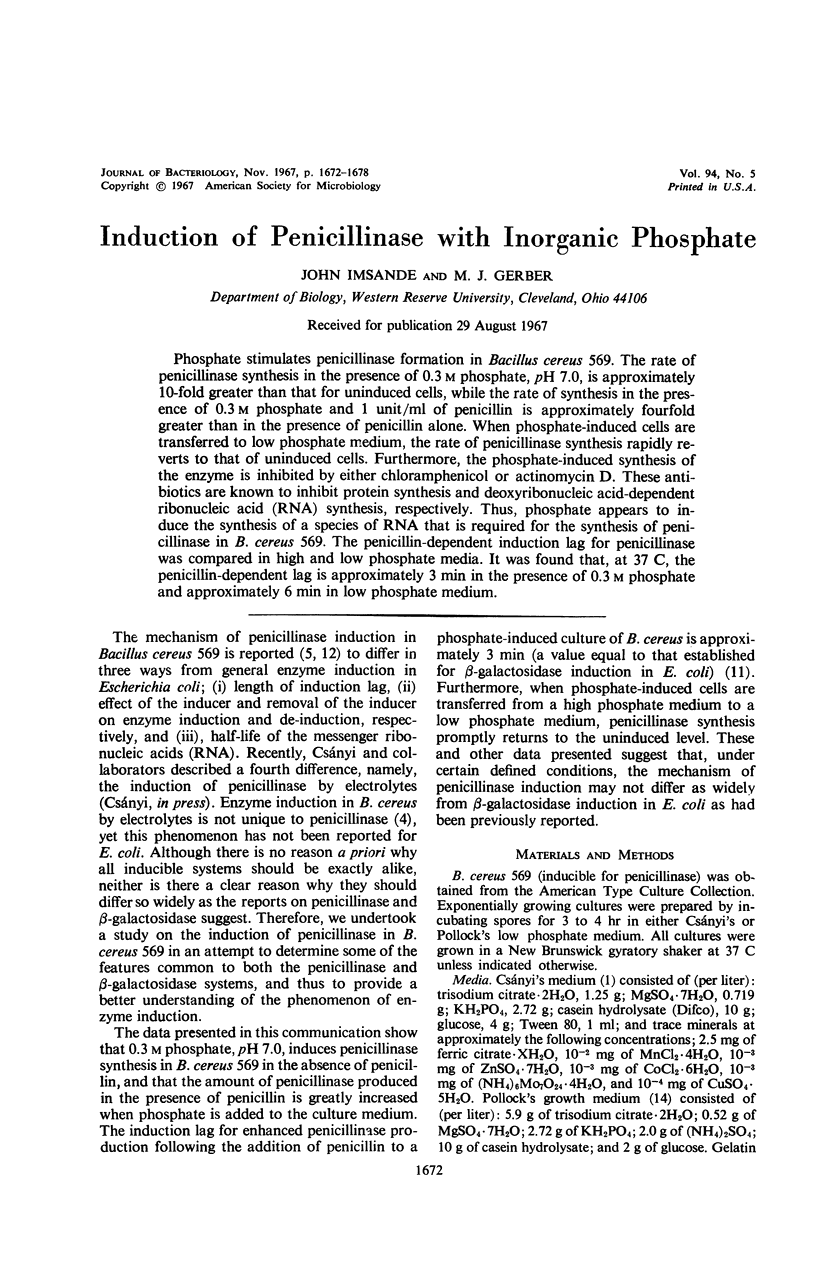
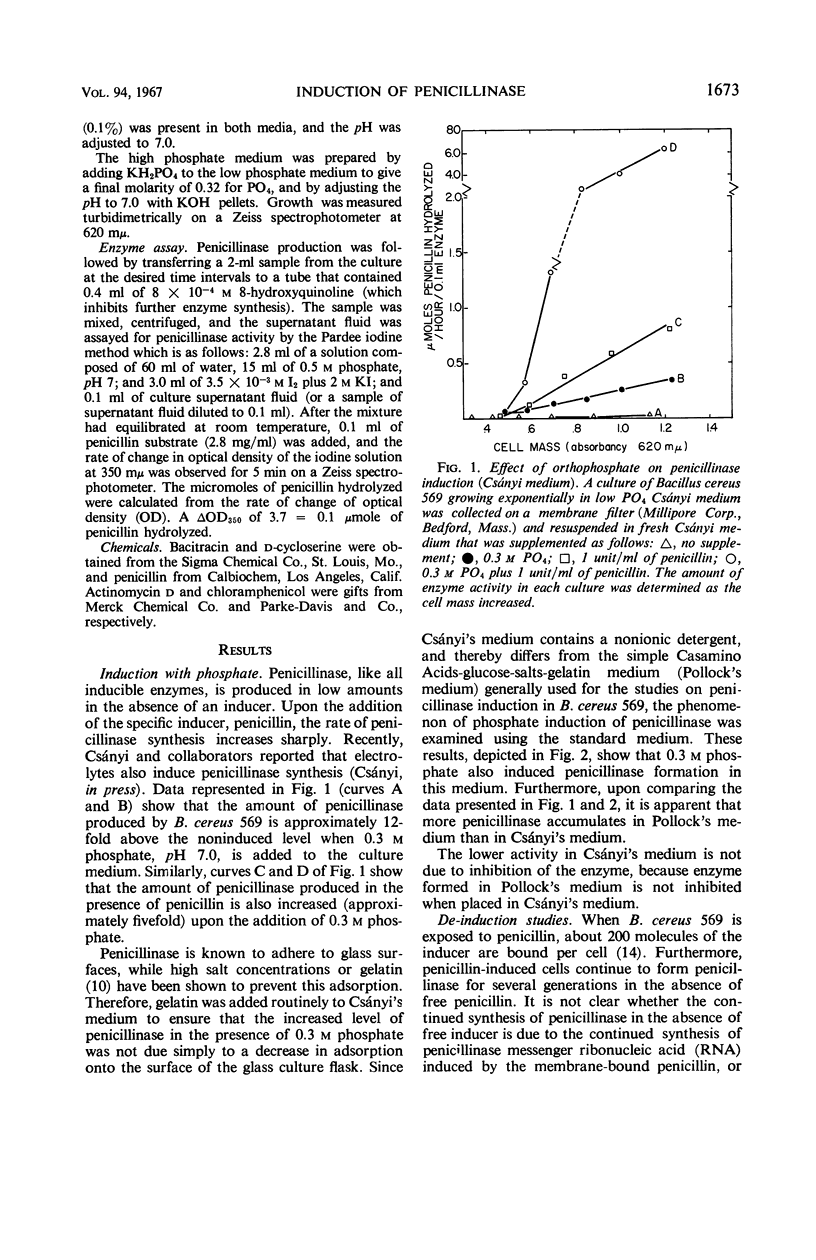
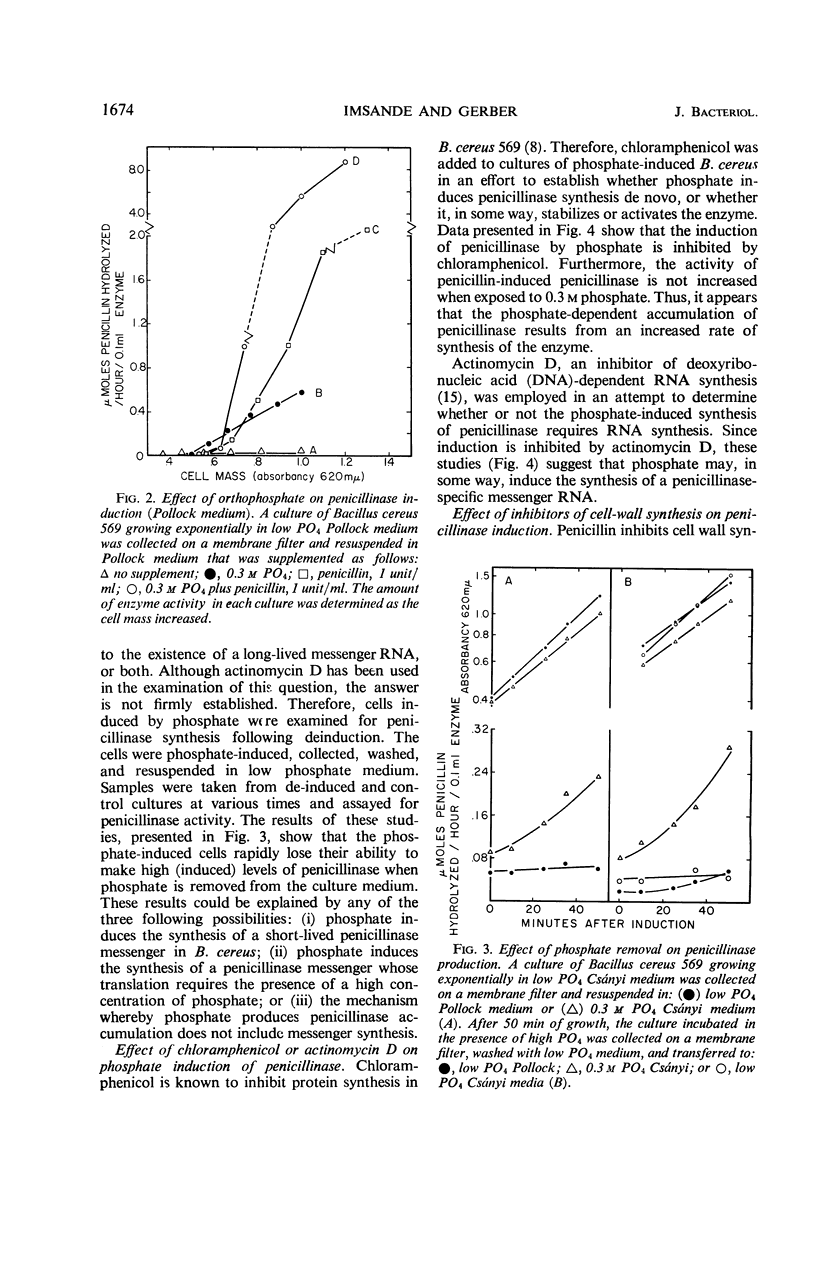
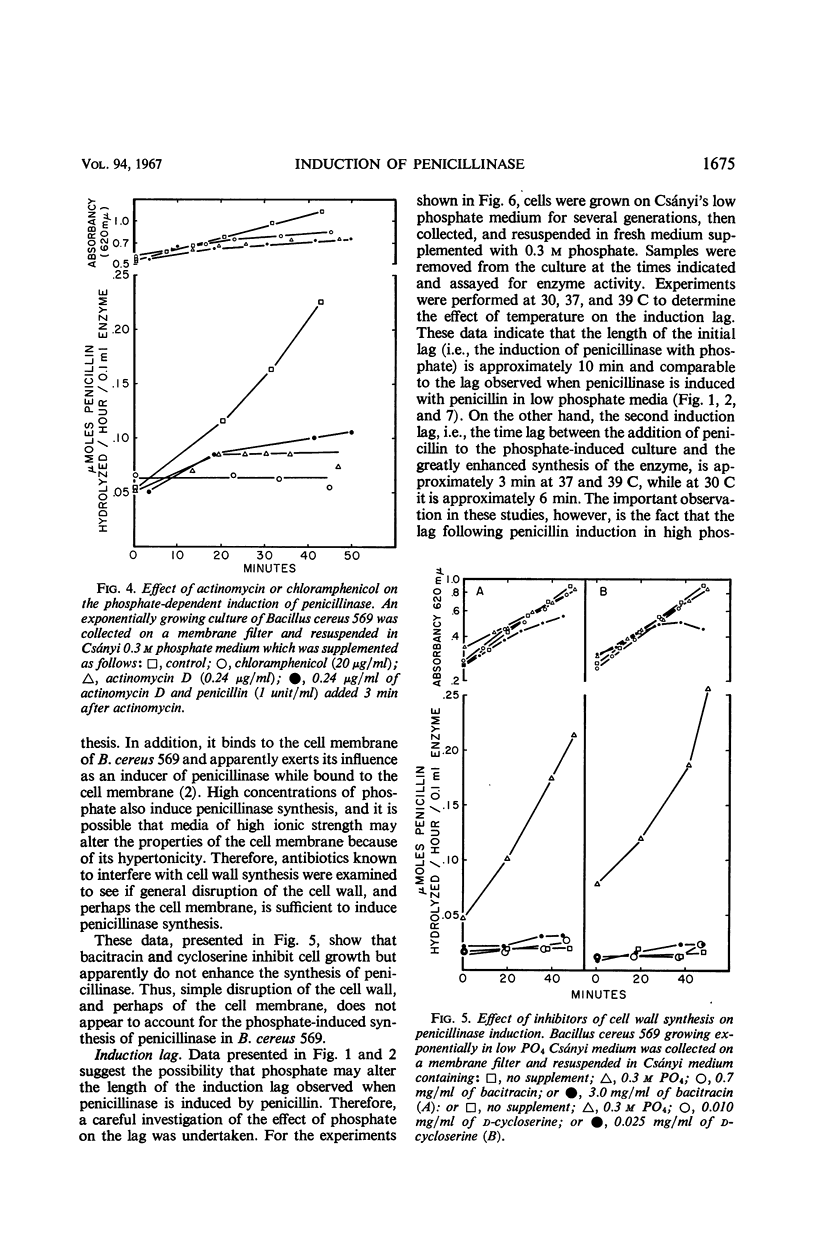
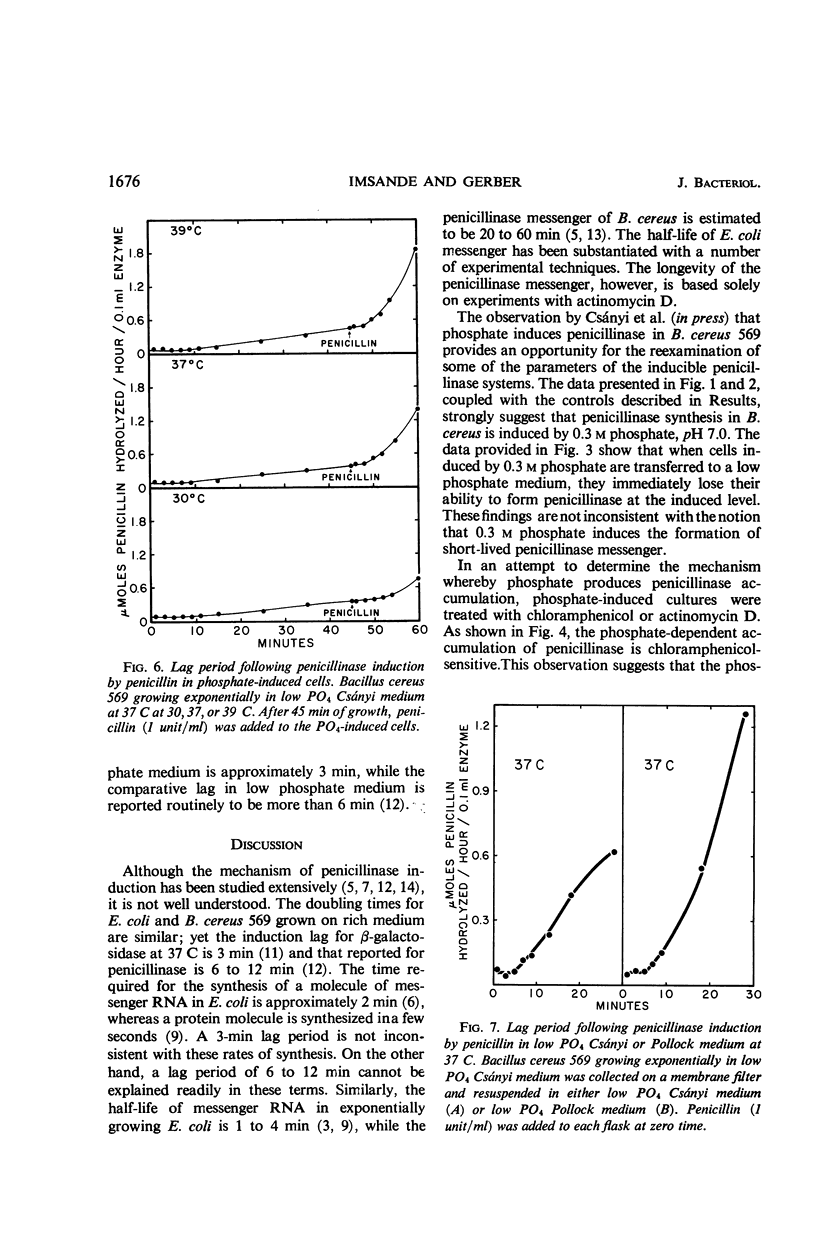
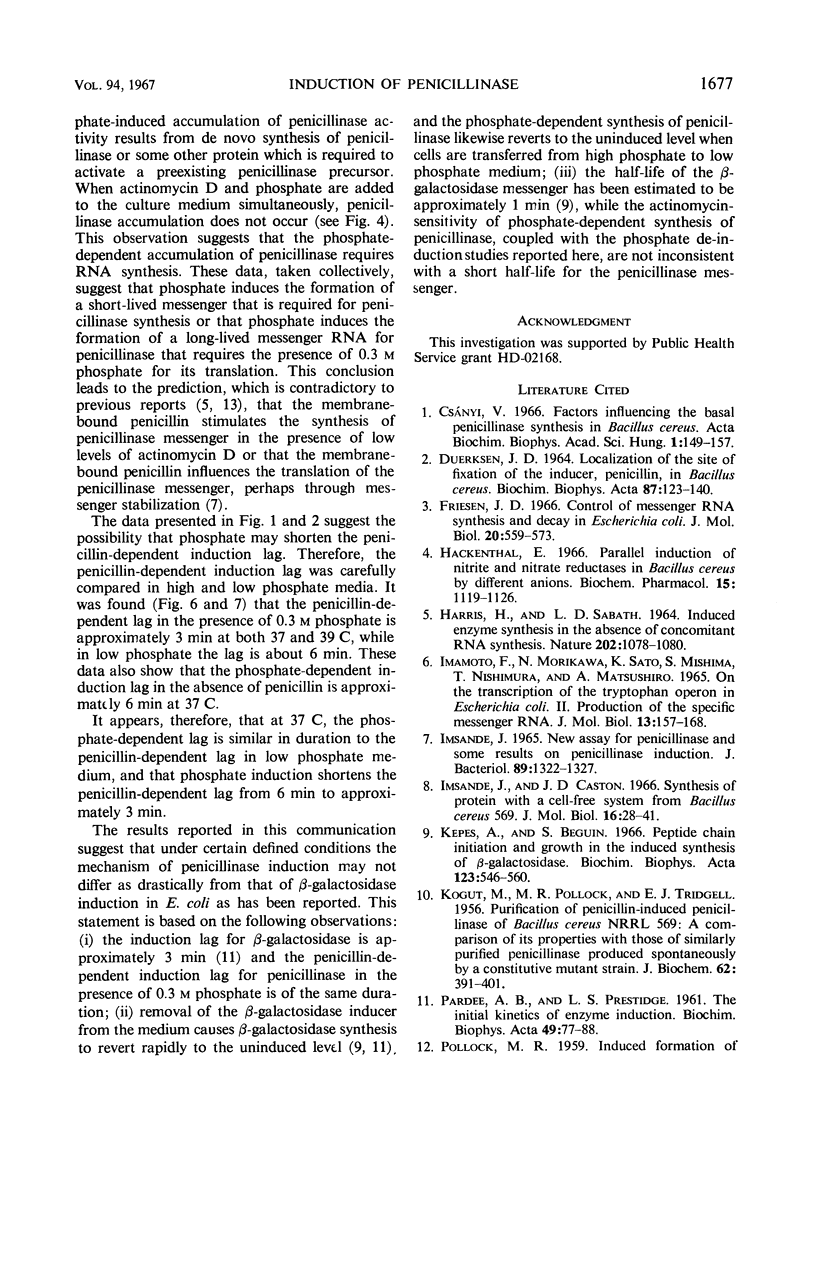

Selected References
These references are in PubMed. This may not be the complete list of references from this article.
- DUERKSEN J. D. LOCALIZATION OF THE SITE OF FIXATION OF THE INDUCER, PENICILLIN, IN BACILLUS CEREUS. Biochim Biophys Acta. 1964 May 18;87:123–140. doi: 10.1016/0926-6550(64)90053-2. [DOI] [PubMed] [Google Scholar]
- Friesen J. D. Control of messenger RNA synthesis and decay in Escherichia coli. J Mol Biol. 1966 Oct;20(3):559–573. doi: 10.1016/0022-2836(66)90011-8. [DOI] [PubMed] [Google Scholar]
- HARRIS H., SABATH L. D. INDUCED ENZYME SYNTHESIS IN THE ABSENCE OF CONCOMITANT RIBONUCLEIC ACID SYNTHESIS. Nature. 1964 Jun 13;202:1078–1080. doi: 10.1038/2021078a0. [DOI] [PubMed] [Google Scholar]
- Hackenthal E. Die parallele Induktion von Nitratreduktase und Nitritreduktase bei Bacillus cereus durch verschiedene Anionen. Biochem Pharmacol. 1966 Aug;15(8):1119–1126. doi: 10.1016/0006-2952(66)90277-2. [DOI] [PubMed] [Google Scholar]
- IMSANDE J. NEW ASSAY FOR PENICILLINASE AND SOME RESULTS ON PENICILLINASE INDUCTION. J Bacteriol. 1965 May;89:1322–1327. doi: 10.1128/jb.89.5.1322-1327.1965. [DOI] [PMC free article] [PubMed] [Google Scholar]
- Imamoto F., Morikawa N., Sato K., Mishima S., Nishimura T. On the transcription of the tryptophan operon in Escherichia coli. II. Production of the specific messenger RNA. J Mol Biol. 1965 Aug;13(1):157–168. doi: 10.1016/s0022-2836(65)80086-9. [DOI] [PubMed] [Google Scholar]
- Imsande J., Caston J. D. Synthesis of protein with a cell-free system from Bacillus cereus 569. J Mol Biol. 1966 Mar;16(1):28–41. doi: 10.1016/s0022-2836(66)80260-7. [DOI] [PubMed] [Google Scholar]
- KOGUT M., POLLOCK M. R., TRIDGELL E. J. Purification of penicillin-induced penicillinase of Bacillus cereus NRRL 569: a comparison of its properties with those of a similarly purified penicillinase produced spontaneously by a constitutive mutant strain. Biochem J. 1956 Mar;62(3):391–401. doi: 10.1042/bj0620391. [DOI] [PMC free article] [PubMed] [Google Scholar]
- Kepes A., Beguin S. Peptide chain initiation and growth in the induced synthesis of beta-galactosidase. Biochim Biophys Acta. 1966 Sep;123(3):546–560. doi: 10.1016/0005-2787(66)90222-x. [DOI] [PubMed] [Google Scholar]
- PARDEE A. B., PRESTIDGE L. S. The initial kinetics of enzyme induction. Biochim Biophys Acta. 1961 Apr 29;49:77–88. doi: 10.1016/0006-3002(61)90871-x. [DOI] [PubMed] [Google Scholar]
- POLLOCK M. R., PERRET C. J. The relation between fixation of penicillin sulphur and penicillinase adaptation in B cereus. Br J Exp Pathol. 1951 Oct;32(5):387–396. [PMC free article] [PubMed] [Google Scholar]
- POLLOCK M. R. THE DIFFERENTIAL EFFECT OF ACTINOMYCIN D ON THE BIOSYNTHESIS OF ENZYMES IN BACILLUS SUBTILIS AND BACILLUS CEREUS. Biochim Biophys Acta. 1963 Sep 17;76:80–93. [PubMed] [Google Scholar]
- Reich E., Goldberg I. H. Actinomycin and nucleic acid function. Prog Nucleic Acid Res Mol Biol. 1964;3:183–234. doi: 10.1016/s0079-6603(08)60742-4. [DOI] [PubMed] [Google Scholar]


